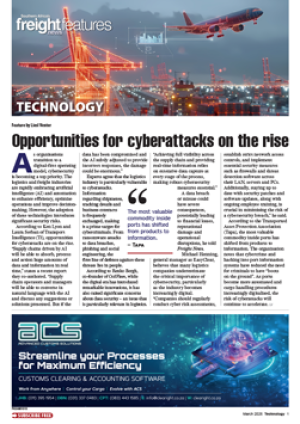Recent studies have revealed that the coastal states and islands of the eastern and southern African region are increasingly being used by illicit narcotics markets. The proximity of this region to major drug trafficking routes renders the ports within these areas vulnerable to trafficking in cocaine, heroin, methamphetamine, cannabis and a vast variety of other synthetic substances. Container concealment is the most common method of moving and concealing large volumes of illicit drugs.
Shipping containers are the lifeblood of the international shipping industry, a major contributor to global trade and, by extension, a key driver of the global economy - and containers enable illicit goods to be transported in large quantities from origin to destination efficiently, reliably, consistently and in a relatively low-risk manner. Of the 750 million containers shipped globally each year, fewer than 2% are physically inspected and, with the busiest ports in Africa accommodating up to 2.6m twenty-foot equivalent units, the potential risk becomes evident. There are four main transnational routes for maritime drug trafficking, with the Port of Cape Town, for example, featuring on three of them.
With Durban recognised as the largest and busiest port in sub-Saharan Africa, and with Cape Town strategically placed at the tip of Africa, these ports present an opportunity for the illicit drugs trade - and with opportunity, there is risk.
In April this year, cocaine worth R15 million was found on a vessel in Richards Bay which was travelling from Colombia. In December 2023, a media statement revealed that Saps had seized more than R360m worth of cocaine, over a period of two months, arriving in Durban harbour from Brazil, and in November 2023, Saps seized R65m worth of cocaine at Gqeberha port. All seizures at our ports of entry are welcomed and applauded but, with the number of shipping containers being inspected at less than 2%, there is obvious reason for concern.
Many cases are the result of lengthy investigations, but most are the result of random inspections. In this regard, the Border Management Authority must play a pivotal role with the establishment of their Coast Guard division, but there are several other recommendations that have been put forward to address the challenges of our ports being used for drug trafficking.
These include:
1) recognise and address the rapidly emerging role of Madagascar as a regional maritime drug trafficking hub;
2) enhance collaboration and intelligence sharing between regions on maritime drug trafficking;
3) secure port-based surveillance tools to assist detection officers to quickly identify suspect shipments;
4) adopt and harmonise customs systems which would include a Maritime Single Window being integrated into a National Single Window; and
5) improve maritime surveillance and interdiction in the Mozambique Channel. Shipping companies are also scrambling to upgrade their fleets with new technology such as vapour-screening sensors, smart containers and electronic seals. The focus should not, however, be only on what is detected within the ports, but the port perimeters become equally at risk if the ports are not adequately protected with strict entry and exit controls and surveillance equipment etc. Although the concern is focused on illicit drugs entering South Africa, there is also a need to stop them leaving our shores.








